Modern point-of-sale (POS) solutions are flexible and offer a wide array of helpful features. You can complete sales quicker and minimize the amount of busy work required to keep your books in order.
Whether you’re looking to upgrade your existing POS software or buy a new point-of-sale system, this guide will help you find the best one for your needs.
The 8 Best Point of Sales Systems in 2025
Our favorite POS systems are:
- Lightspeed – Best overall POS
- Square – Best for selling in-person and online
- TouchBistro – Best for restaurants and food service
- Revel – Best for multi-location businesses
- Clover – Best fully customizable POS system
- Shopify – Best ecommerce POS
- QuickBooks POS – Best for accounting integration
- Helcim – Best for lowering transaction costs
For most, Lightspeed is an affordable and user-friendly POS system that checks all the boxes. But if you’re a restaurant, managing multiple locations, or selling face-to-face and online, you can’t go wrong with the other three.
There are a lot of really great POS systems out there. We researched many options and narrowed our top list down to the eight best.
Each tool on this list excels at the basics and goes beyond to offer features uniquely qualified for certain business needs.
Lightspeed – Best Overall POS
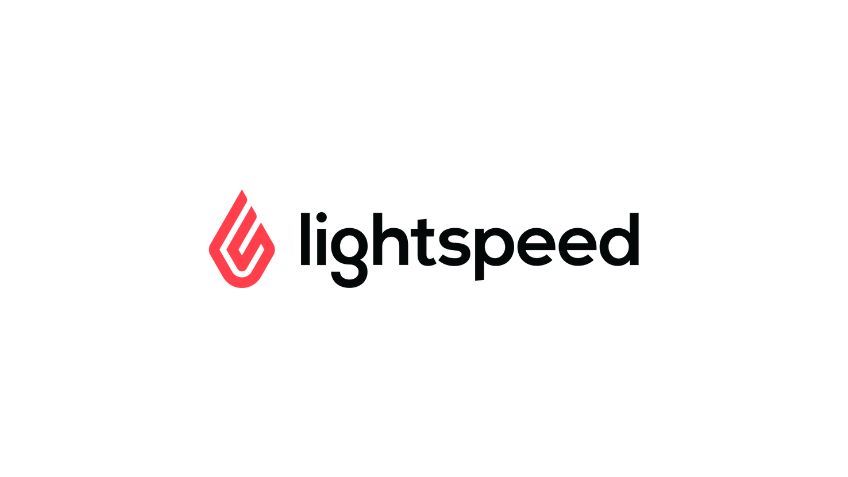
Lightspeed offers POS solutions for retailers, restaurants, hotels, and more. It’s easy to deploy and simple for employees to learn.
Whether you have online sales, in-store sales, or a little bit of both, Lightspeed POS will work just fine.
You can try the full platform free for 14 days to test out every feature. If you like what you find, Lightspeed will work with you to get your business set up with the right hardware.
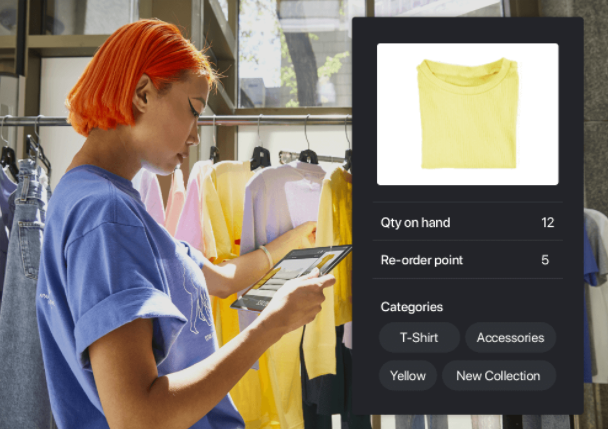
You can also track unit costs, get alerts for items that are low in stock, and even sell out-of-stock items that will be fulfilled upon arrival.
Lightspeed is ideal if your location requires special requests, like custom items, work orders, layaways, and purchase orders. You can meet all of these demands directly from your POS.
This makes it a popular choice for small business owners in the following categories:
- Bike shops
- Jewelry stores
- Golf equipment
- Pet supplies
- Home decor
- Sporting goods
- Apparel
You can use Lightspeed with your own hardware from any device, regardless of the operating system. Lightspeed POS allows you to set up customer profiles for purchase history and lifetime value. You can also segment your customers into different categories.
Lightspeed offers a free plan for ecommerce to get your online business launched, with no obligation. There is also a $69 per month plan for retail and restaurants with an annual contract. Lightspeed even offers a package for golf businesses, although you’ll need to get a quote for pricing.
You can upgrade to premium plans, but all of the essentials for ecommerce, retail, and restaurants are included with their respective base packages.
Lightspeed can double as a payment processor. It charges 2.6% plus $0.10 per transaction.
Find out more about Lightspeed and sign up for a free trial.
Square – Best for Selling In-Person and Online
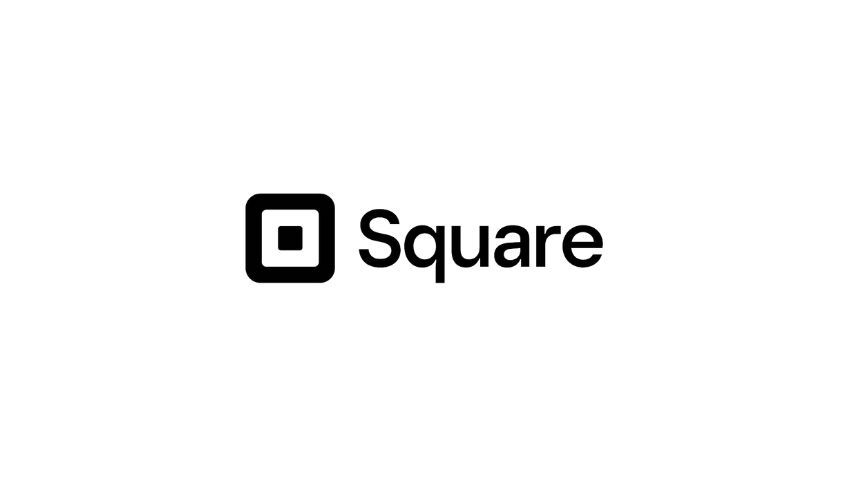
Square is an affordable POS system that anyone can pick up and start using today. There is minimal hardware to buy for taking payments in person–and none if you want to sell online.
Square actually lets you build a free website or online store for your business, which is very uncommon for a POS system.
People choose Square because it “just works” for a huge range of businesses. Just plug the Square Reader into your phone to start selling. Square Readers support either traditional magstripe “swipe” payments, or chip and contactless payments.
You can get exactly what you need and pay for nothing more.
Alternatively, you could get a Square Terminal or Square Register. These print receipts and allow you to accept magstripe, chips, and contactless payment.
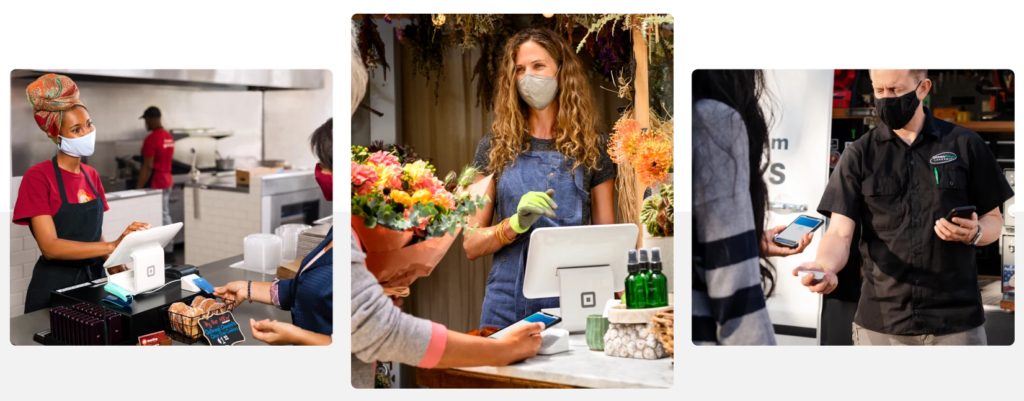
All sales through Square are tracked in a single system. Your register, reader, and online sales are always perfectly synced, with no work on your end.
It’s easy for you to manage, track, and update your inventory. Square also provides real-time analytics and reporting and lets you create customer profiles to manage your customers better.
Square also offers special plans for professional services as well as food & beverage. Track bookings, appointments, or reservations with Square just as easily as inventory.
Since Square is a credit card processor, you won’t need to integrate a third-party solution to accept payments. You won’t pay any hidden costs or monthly fees either.
Square offers a free plan to get you started. No matter how many sales you process, your only cost is the transaction rate. For swipes, dips, and taps, it’s 2.6% + $0.10 per transaction. For bank transfers and manual key-in transactions, the fees are slightly higher.
Square also has a Plus plan for restaurants, retailers, and appointment-based businesses. It starts at $29 per month plus processing fees. You can upgrade whenever you want and cancel anytime.
It’s worth noting that Square does offer volume discounts for larger businesses. If you process more than $250k per year with an average order size over $15, contact its sales team for a custom solution.
One potential drawback of Square is if your business scales too quickly. Some users complain that their accounts were placed on hold for large transaction volumes, as the system has security protocols in place to protect against fraudulent charges.
Square is the best overall POS system today, especially if you want the flexibility of selling online or in person. We recommend it for entrepreneurs, small business owners, and even medium to large-sized companies.
TouchBistro – Best for Restaurants and Food Service
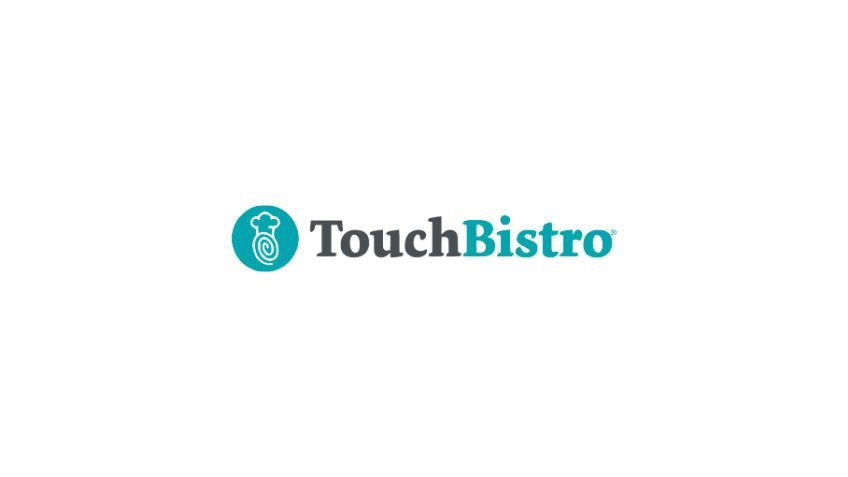
As the name implies, TouchBistro is an industry-specific POS solution. It offers tools for full-service restaurants, bars, clubs, food trucks, breweries, and quick-service food or drink businesses.
There’s a lot less setup these businesses have to do to get everything right. Reservations, table seating, deliveries, menu changes–it’s all built right into the software.
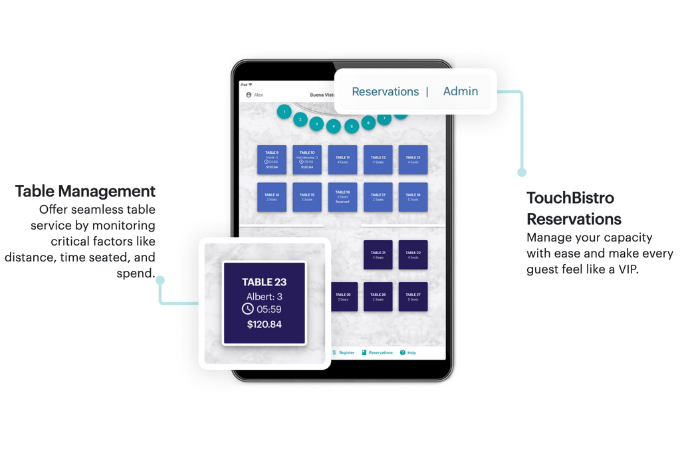
Some of the top features of TouchBistro include:
- Tableside ordering
- Reporting & analytics
- Table management
- Payment processing
- Staff management
- CRM
- Menu management
- Inventory management
TouchBistro is an all-in-one solution that allows you to set up self-ordering kiosks, a kitchen display system, and customer-facing displays for takeout. You can even integrate your POS with online ordering. It’s essentially everything you would need in a POS system if you are in the food service industry.
With TouchBistro, you have the option to use your own hardware and just buy the software. Alternatively, you can bundle the software and hardware with your plan.
TouchBistro starts with basic POS pricing for the main system, and offers a variety of add-on products at additional monthly costs.
- TouchBistro POS — starting at $69 per month
- Online Ordering — starting at $50 per month
- Loyalty — starting at $99 per month
- Marketing — starting at $99 per month
- Gift Cards — starting at $25 per month
- Reservations — starting at $229 per month
- Kitchen Display System — starting at $19 per month
- Profit Management Tools — starting at $330 per month
Note: All plans are billed annually.
TouchBistro has outstanding 24/7 customer support via phone and email. It also offers training services for large operations. The staff is comprised of actual food service managers, servers, and owners who know exactly how to address your needs and challenges.
While TouchBistro is hands down our top recommendation for restaurant POS software, there are a few things to keep in mind before you get started.
The system is not entirely cloud-based, so you’ll need to run it on a local network as well. So it’s not the best fit for those of you who operate with an unstable or unreliable Internet connection. TouchBistro also runs on an Apple-based infrastructure. So if you want an Android or Windows POS system, this is not the best choice for your restaurant.
It’s an excellent POS solution, but the price can climb fairly quickly with all of the add-ons and extras available. We like that you’re not forced to pay for features that you may not end up using, but it would be nice to see some bundled plans with cost-saving options for businesses that want it all.
Revel – Best for Multi-Location Businesses
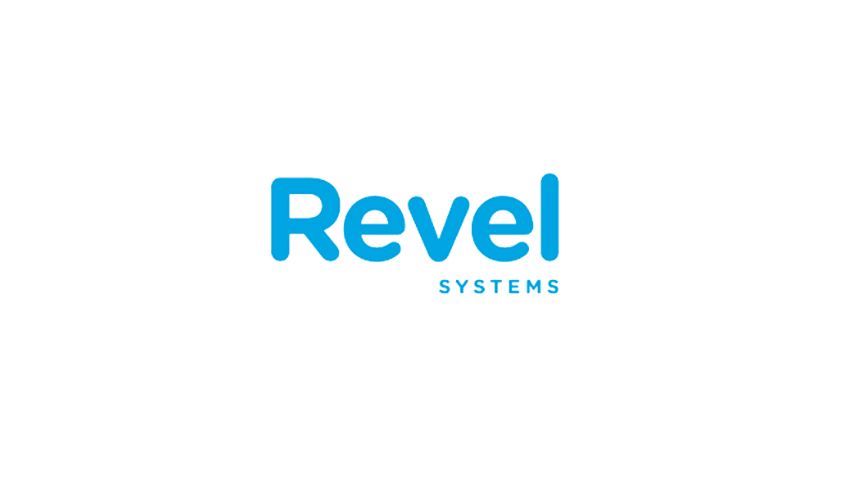
Revel offers POS systems for retail, restaurants, bars, and quick-serve businesses. Revel is a hybrid POS, using a combination of the cloud and your local network to store information. That means you don’t need to worry if you lose a connection. You can still process transactions.
If you’re a small business owner with multiple locations, Revel has a centralized management system that standardizes everything across each site.
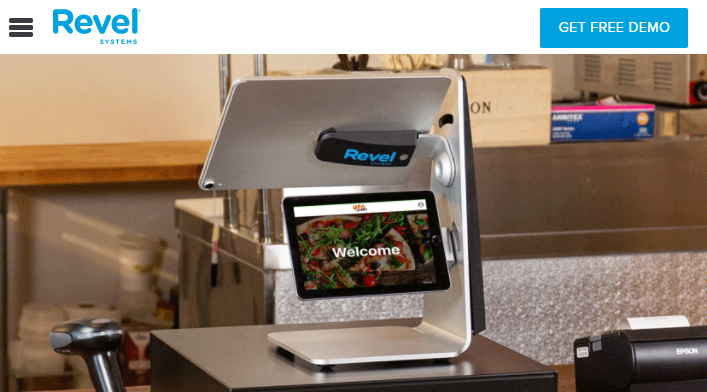
Revel has a wide range of hardware options for you to choose from, depending on the type of business you have and your in-store layout:
- Apple iPads
- iPad stands
- Self-service kiosks
- Barcode scanners
- Printers
- Payment devices
- Networking
- Cash drawer and till
While other POS systems on the market encourage you to use your own devices, Revel strongly recommends that you buy hardware directly from them for everything to go smoothly. This reduces friction and potential tech issues, but it will be an added cost.
Speaking of price, the Revel POS software starts at $99 per month per terminal. It’s a bit pricey compared to the competition, especially for a small business owner. Installation and onboarding start at $674. Contact the sales team for a quote on processing fees.
Revel POS software contracts are billed annually, with a minimum 3-year contract required. So you won’t have the flexibility to change or cancel in the short term.
Revel’s high prices are justified if you plan to take advantage of its CRM features. It offers tools for customer insights, segmenting customers, connecting with marketing campaigns, managing appointments, and more.
Their system provides you with a fantastic customer loyalty experience too. Loyalty programs are an excellent way to build and maintain customer interest, and Revel makes it easy to implement a loyalty program.
Revel’s Loyalty XT lets you auto-register clients directly on your POS with just a few clicks. Customers can also scan a QR code and sign up on your website. You can even incentivize customers to join with a welcome gift.
Once you have the system set up, you can use marketing automation to deliver targeted offers to customers that will keep them coming back. Offer them extra points, invite them to exclusive in-store events, the options are endless.
If you can afford the high monthly rates, installation fees, and hardware, Revel offers enterprise-grade POS systems for small businesses. But the price may be more than some smaller businesses can handle, especially for a 3-year contract.
Clover – Best Fully Customizable POS System
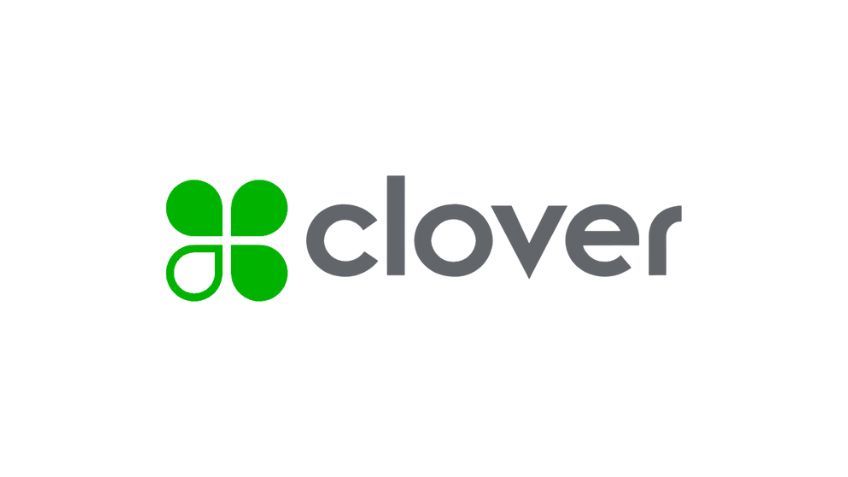
Clover is arguably the most versatile POS solution on the market. They offer everything from basic card readers for payments on the go to full countertop systems with cash drawers and touch screens.
What really makes Clover unique from other POS systems is that it can be tailor-made to fit your unique needs. You can easily select multiple hardware options to ensure your POS matches perfectly with your operations.
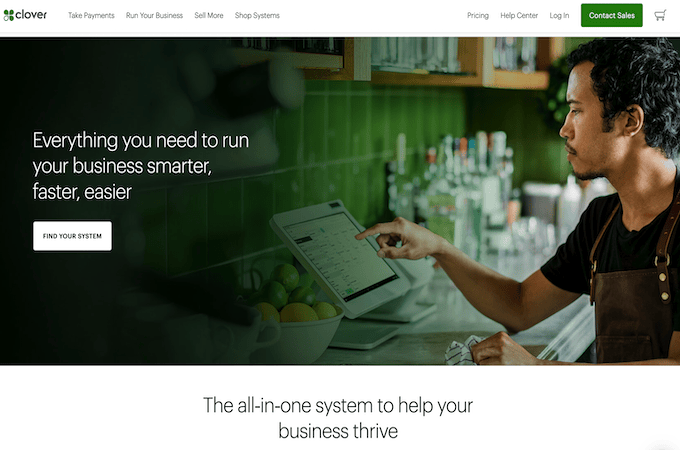
For example, maybe you want a countertop register in one part of your store. But you want a portable card reader so your staff can collect payments without being tied to one location. These types of systems work really well for restaurants, retail, professional services, and field service operations.
Beyond the hardware, Clover also lets you enhance your POS system with third-party apps. These customizations go beyond basic POS functionality—allowing you to turn your POS system into an all-in-one system for running your business.
Some examples of things you can do from Clover include:
- Manage customer profiles
- Set up a customer rewards program
- Organize employee scheduling
- Add an employee time clock function
- Keep track of your inventory
- Get real-time sales insights
Clover even plays nice with third-party tools like Paychex, Gusto, Indeed, QuickBooks, Xero, and more.
Pricing for Clover’s POS software and hardware varies based on your business type and payment terms. You can buy your POS system outright and pay a reduced monthly fee, or you can just lease the equipment along with the software subscription.
For example, the cheapest handheld POS system starts at $50 per month on a 36-month lease. Or you could buy the hardware outright for $599 and pay an ongoing $14.99 monthly subscription fee.
The lease will end up costing you over $2,300 over three years. So purchasing the system is best for saving money in the long run. But if you’re short on cash, the leases can be a bit more budget-friendly on your monthly expenses. This is especially true for some of the larger terminals that cost over $2,000 to purchase outright.
Clover also has built-in credit card processing starting at 2.6% + $0.10 per transaction.
Contact the Clover sales team today to build a custom POS system.
Shopify – Best Ecommerce POS
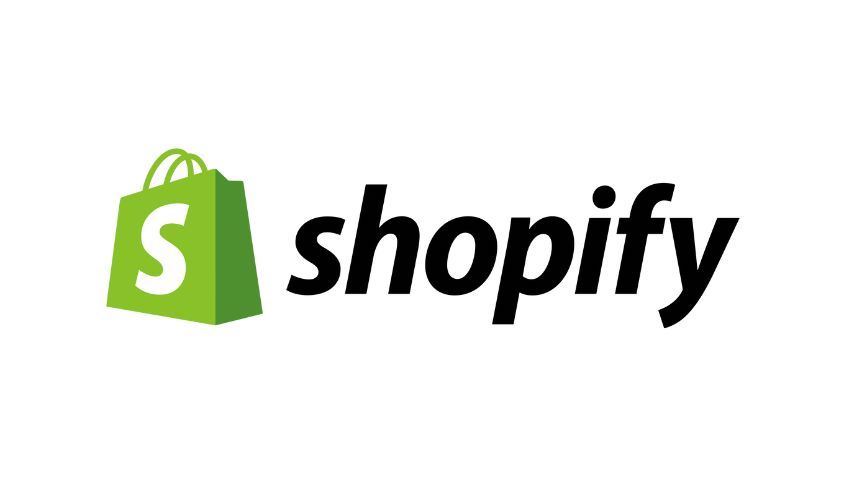
Shopify is an outstanding way to accept payments online, in person, or both. Most people are familiar with their sleek online store builder, but Shopify’s POS system is excellent as well.
And if you’re already using this platform for your online store, you should use Shopify POS as well. This will offer seamless integration and let your two systems work as one.
Your inventory is updated and managed in real-time across multiple locations for Internet and in-person sales. You can also manage transfers between locations and use Shopify for inventory forecasting.
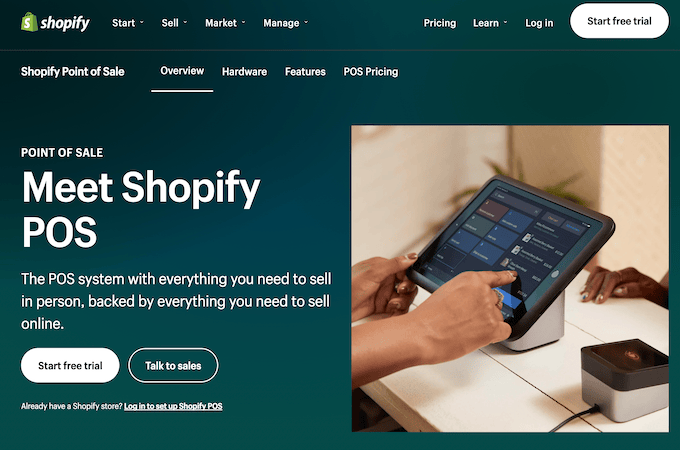
Shopify makes it easy for you to create loyalty with profiles and tools for building customer loyalty programs.
Shopify POS also allows you to accept payments anywhere in-store. That means no long lines (or at least fewer of them).
Since your ecommerce and the in-store solution will be connected with Shopify POS, customers will have the ability to return or exchange an online purchase at a local retail location.
Shopify POS is included for free in the monthly cost of your Shopify plan. You’ll only pay extra for the processing fees.
Basic Shopify — $39 per month
- 2.9% + $0.30 for online credit card transactions
- 2.7% for in-person card transactions
- 2 staff accounts
Shopify — $105 per month
- 2.6% + $0.30 for online credit card transactions
- 2.5% for in-person card transactions
- 5 staff accounts
- Unlimited staff POS PINs
- 1-5 store locations
Advanced Shopify — $399 per month
- 2.4% + $0.30 for online credit card transactions
- 2.4% for in-person card transactions
- 15 staff accounts
- Unlimited staff POS PINs
- Up to 8 store locations
For selling online with dozens of physical store locations, you’ll need to find something a bit more advanced than Shopify. But Shopify is perfect for easy setups and selling right away both online and in-person from a handful of brick-and-mortar stores.
If you’re currently using Shopify to sell online, then using Shopify POS for in-store transactions is a no-brainer. We also recommend Shopify if you’re in the market for a new POS system, and you’re looking to launch a new ecommerce store.
QuickBooks POS – Best for Accounting Integration
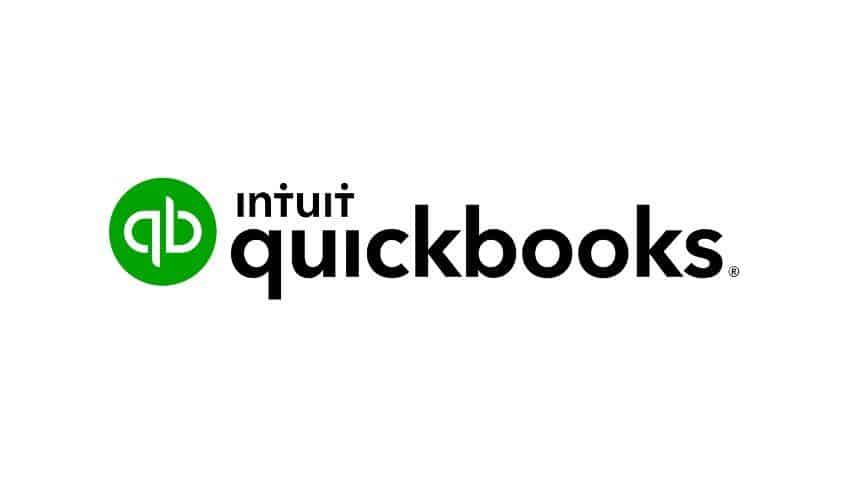
QuickBooks is known as one of the best accounting tools on the market. But it’s also a great point-of-sale system if you’re looking for an integrated accounting and bookkeeping solution.
If you’re already using Quickbooks, you should definitely consider it for your POS. The benefit of using the same company for POS and accounting software is that your analytics and insights will be extremely accurate.
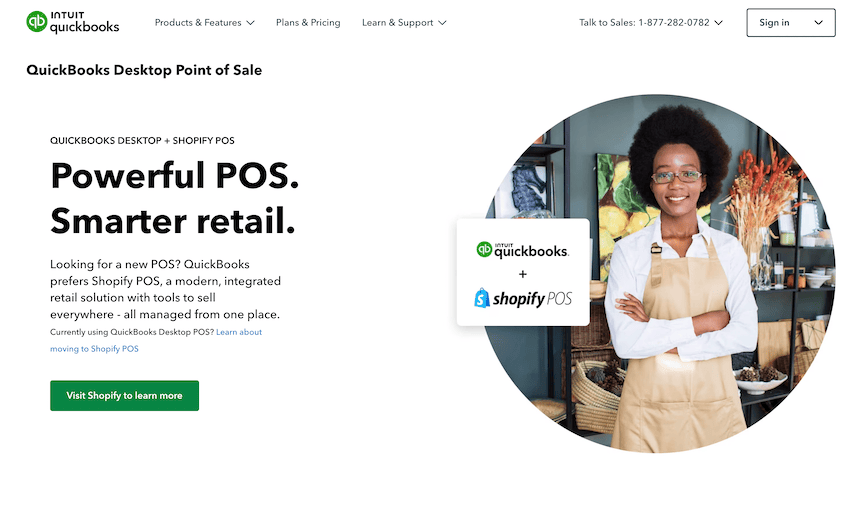
Using QuickBooks can ultimately improve your bookkeeping process and accounting department.
QuickBooks recently stopped supporting its own POS system. Instead, they’re directing new customers to use QuickBooks Desktop with Shopify POS for the ultimate accounting and POS combination.
If you’re using QuickBooks Desktop, you can unlock amazing promotional rates on your Shopify POS.
Plans start at $534, which represents 50% off your first year. You’ll also get a free tap and chip card reader, free Shopify Basic plan for three years, and 50% off additional hardware.
Helcim – Best for Lowering Transaction Costs
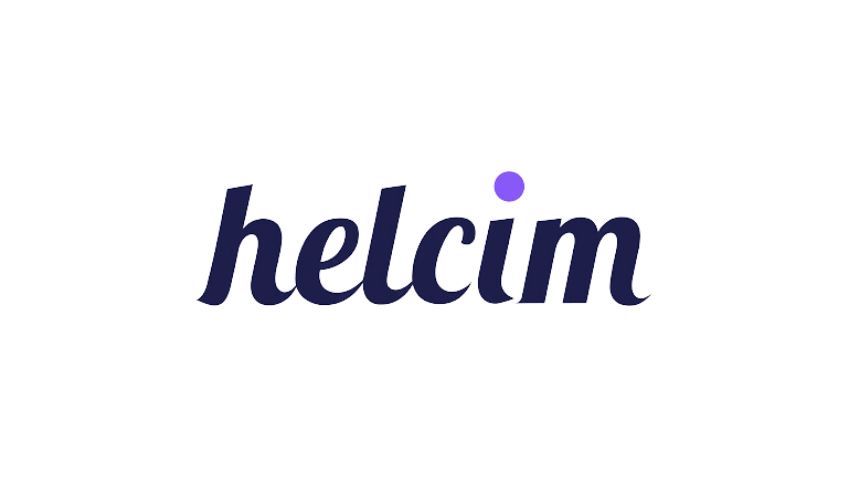
Helcim is another all-in-one POS solution that lets you accept payments online and in person.
We like this platform a lot because of its Intercharge Plus pricing.
If you have ever looked at your payment processing fees, you know that the rates can vary widely depending on the card type and whether sales are in-person or online. With Intercharge Plus pricing, you wind up saving a lot more than you would with flat-rate and other processing fee structures.
Helcim also offers high-quality hardware, like the wireless Helcim Card Reader. It allows you to accept debit and credit cards from all the major companies.
This POS system also syncs across desktop, tablet, and mobile devices to allow you a flexible range of payment acceptance options.
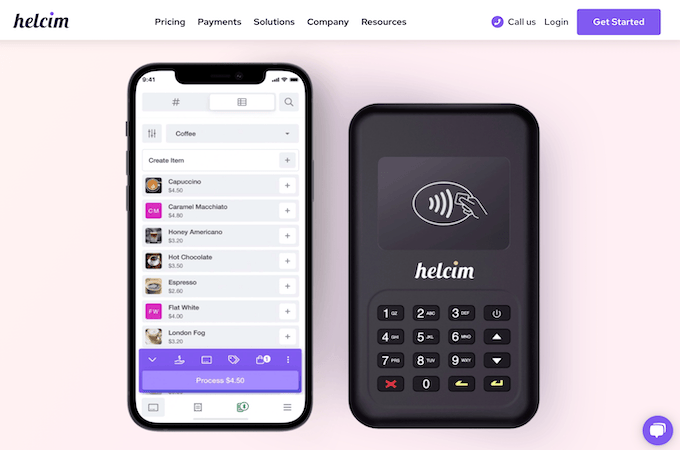
This platform makes it easy to get an online store off the ground. You can actually create one right on their website. It’s incredibly easy to use. You don’t need to be a web developer or even know how to code. And you can transfer your existing product catalog to their store in minutes.
Naturally, the site comes with the Helcim payment processor built-in for a seamless shopping experience.
There are a lot of great-looking themes for your online store too, so choosing one for your brand should be easy.
As for pricing, there is no monthly fee and average transactions rates vary depending on your monthly volume. Sign up today.
How to Find the Best POS System
There are certain factors that you should be looking for as you’re evaluating different POS systems. This is the same methodology that we used to narrow the top recommendations in this guide. We’ll explain each consideration and why it matters below.
Payment Processing
Your POS system must be able to process payments. Some options have built-in payment processors, while others have third-party integrations.
So if you’re currently using a payment processor and you don’t want to switch, make sure to choose a POS system that can integrate with that processor.
Ecommerce Capabilities
If you’re selling online or plan to sell online, you should look for a POS system that integrates with your ecommerce store. Otherwise, you can run into problems with inventory management.
For those of you just selling in-store now but plan to enter the ecommerce market later, we still recommend an all-in-one solution like Shopify. Shopify POS is free with any Shopify ecommerce plan.
Setup and Ease of Use
The best POS systems have a simple setup process. Some don’t even require any hardware purchases. It’s as simple as installing software on your own device.
Other systems require you to purchase hardware directly through the provider. These setups are usually a bit more challenging, but not always complex.
Once your POS is up and running, it’s crucial that the solution is easy for your staff to use. If you’re in the restaurant or retail industry, there’s a good chance you have lots of part-time workers and have high employee turnover. So training and daily use with the POS software needs to be as simple as possible.
Inventory Management
Look for POS solutions that offer some form of inventory management. Some options are better than others, and you may need to upgrade your plan in order to get the full benefits of inventory tracking.
If you just have one location and you’re not selling online, this feature may not be that important to your business. But for those of you with a more extensive operation, proper inventory management is a must-have.
Hardware
Do you want to use your own hardware or buy equipment when you purchase POS software?
There are lots of factors that go into this decision. Price could be one of them, but that’s not always the case. Hardware can also impact the ease of use.
The type of hardware you use will also depend on the type of business you have. For example, if you run a coffee shop, you’ll probably want a customer-facing POS terminal behind the counter. But other retail locations may prefer a mobile POS for staff to use out on the floor.
Industry and Type of Business
Some POS solutions are industry-specific. For example, TouchBistro is the best choice for businesses in the food service industry. Lightspeed is the best for custom orders.
The size of your business matters also when choosing a POS system. If you have just one small retail location with a single register, Square would be a top choice for you to consider. But if you want to scale with multiple registers across multiple locations, you’d be better off with a solution like Revel.
The Value of a POS System
Today’s point-of-sale systems do much more than just process payments. These systems make it possible for you to operate your entire business. You can:
- Manage inventory and employees
- Track and analyze crucial sales metrics
- Integrate your POS with customer loyalty programs, email marketing tools, accounting systems, payment processors, ecommerce platforms, and more
- Access the data from anywhere on mobile
And while improving your business, a POS helps enhance the overall customer experience by speeding up your in-store sales process, eliminating manual tasks, and improving the accuracy of your reporting.
Best POS Systems: Your Top Questions Answered
The Top POS (Point of Sale) Systems in 2025
Choosing the right POS software is crucial to the success of your business. These modern solutions do so much more than just process payments. There are POS systems designed for general use, mobile applications, small businesses, and even niche things like coffee shops.
You can use a POS system to sync inventory with your registers, connect your online store with in-person sales, and centralize your bookkeeping. Transactions are easy for customers, who can pay in multiple ways. And everything is easier on the backend for your employees and business.
